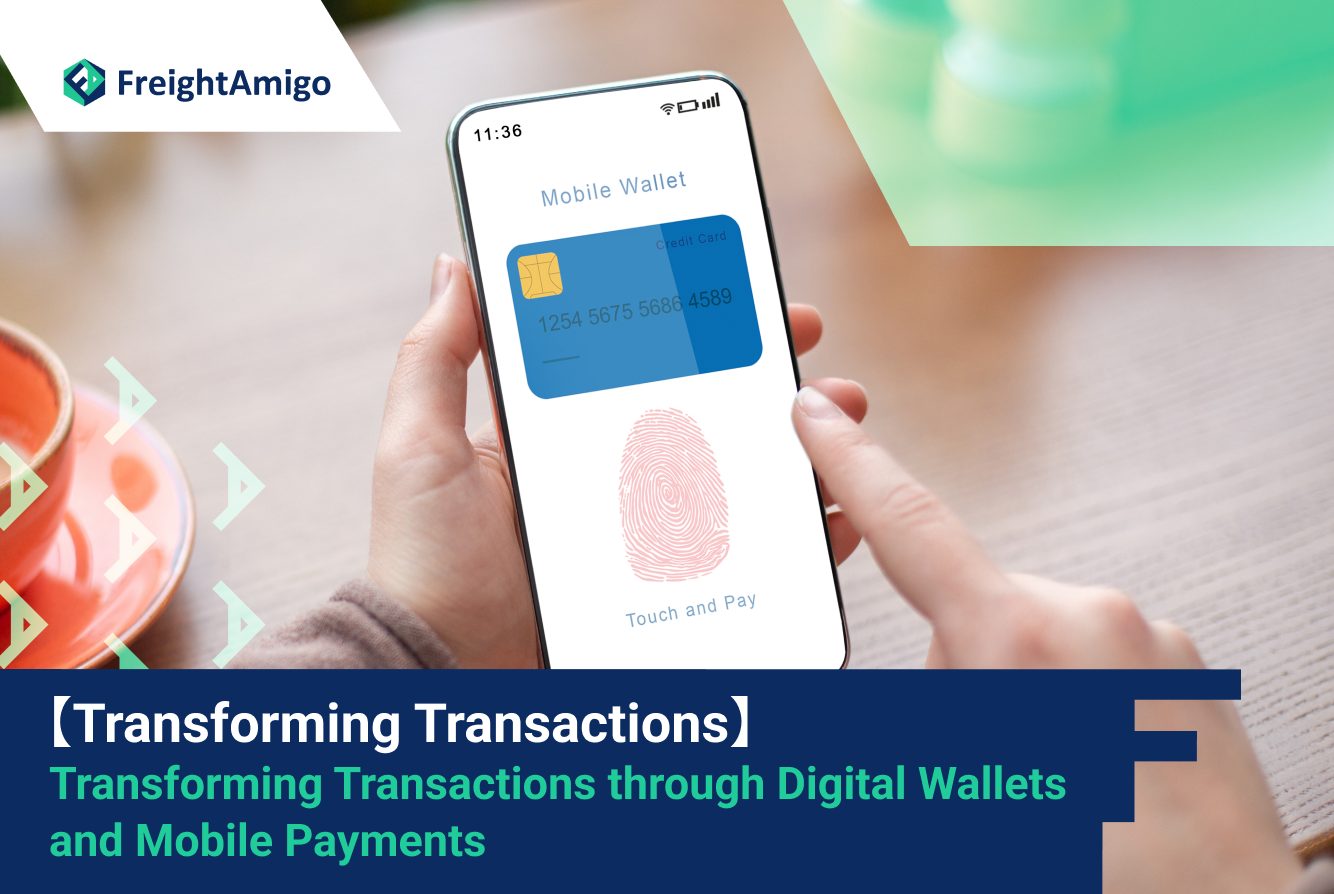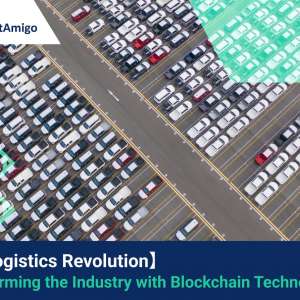In the age of digital transformation, financial technology is revolutionizing the way businesses and consumers transact. Digital wallets and mobile payment apps are at the forefront of this revolution, offering a seamless, secure, and convenient way to conduct financial transactions.
Author Name:Tiffany Lee – Marketing Analyst at FreightAmigo
Want To Compare The Best Express, Air Freight, Sea Freight, Rail Freight & Trucking Rates So As To Have Better Control On Cost?
Understanding Financial Technology
Financial technology, or FinTech, refers to the use of technology and innovation to improve and automate the delivery of financial services. By employing advanced algorithms, machine learning, blockchain technology, and other sophisticated tools, FinTech is transforming traditional financial and banking systems.
Role of FinTech in Digital Payments
At the heart of FinTech innovation are digital payment solutions, including digital wallets and mobile payment apps. These solutions leverage technology to facilitate transactions, making them faster, more secure, and more convenient than traditional methods.
The Emergence of Digital Wallets
A digital wallet is a financial account or service operated through a digital platform, such as a smartphone app. It allows customers to store funds, make transactions, and track payment history through their mobile devices.
Types of Digital Wallets
Digital wallets come in various forms, each with unique features and benefits:
- Closed-loop apps: These are specific to individual retailers or related businesses. They often serve as loyalty programs, offering rewards and points for transactions.
- Open-loop apps: These can be used across various retailers. Examples include Apple Pay and Google Pay.
- Peer-to-peer payment apps: Designed for direct transactions between individuals, these apps are ideal for splitting bills or transferring money.
How Do Mobile Payment Apps Work?
Mobile payment apps link to your existing financial accounts, facilitating transactions. Here’s a step-by-step breakdown of how a transaction happens:
- Authentication: The app verifies your identity.
- Communication: The app interacts with the vendor’s transaction system.
- Transaction: Your financial institution receives a payment request.
- Approval: Your financial institution reviews the request.
- Confirmation: Both you and the vendor receive a confirmation.
- Settlement: The agreed-upon amount is moved between accounts.
- Recordkeeping: The app generates a digital receipt.
Impact of Mobile Payment Apps on Businesses
Mobile payment apps are reshaping commerce, individual behavior, and regulatory policies. Here are some notable effects:
- Digital transformation: Businesses are integrating mobile payment solutions, affecting customer-facing roles and internal operations.
- Shift in customer behavior: Mobile payments have changed customer expectations.
- Data analytics: Mobile payment apps provide valuable data about customer behavior.
- Financial inclusion: In regions with limited banking infrastructure, mobile payment apps provide access to financial services.
- Security concerns: The growing prevalence of mobile payment apps makes them attractive targets for cybercriminals.
- Regulatory challenges: Lawmakers are debating how to classify and regulate these services.
The Role of Mobile Payments in Logistics
In the logistics industry, mobile payments have transformed operational structures. It has replaced manual, paper-driven processes with digital, real-time transactions. Mobile payment solutions in logistics have various forms:
- Mobile Browser-based Payments: Payments made via a mobile browser.
- In-app Mobile Payments: Payments made within an app.
- Mobile Credit Card Readers: Devices that allow credit card payments on the go.
- Mobile Wallets: Apps that store credit, debit, and loyalty card information for easy transactions.
Benefits of Mobile Payments in Logistics
Convenience and Speed
Mobile payments streamline the checkout process, reducing cart abandonment rates and increasing conversion rates.
Enhanced Security
Robust security measures like tokenization and encryption protect users’ payment information, fostering trust in the online retail experience.
Wider Customer Reach
By accepting digital wallets, logistics providers can cater to a broader customer base, including the tech-savvy and underbanked consumers.
Lower Interchange Fees
Accepting digital wallets can potentially lead to lower interchange fees for providers, optimizing their cost structure.
Challenges of Mobile Payments in Logistics
Despite the numerous benefits, mobile payments also have a few drawbacks for logistics providers:
- Limited Adoption: Not all consumers have adopted this payment method.
- Technical Challenges: Integrating digital wallets into online platforms may pose technical challenges.
- Fragmented Market: The digital wallet market is fragmented, with numerous providers offering different features.
- Paradox of Choice: Offering too many payment options can overwhelm customers and lead to decision paralysis.
Creating a Mobile Payment App
Creating a mobile payment app requires a series of carefully planned steps, including identifying the purpose of the app, conducting a feasibility study, selecting a development team, deciding on the system architecture and payment methods, incorporating security protocols, and testing the app.
The Future of Mobile Payments
As cross-border mobile payment apps grow more common, we’re seeing a gradual move toward a more unified global payment system. This presents new opportunities—and challenges—for market entry and competition on a global scale.
The Role of FinTech Giants
FinTech giants like Stripe, Visa, and TerraPay play crucial roles in supporting mobile payment apps. They provide scalable, secure, and developer-friendly avenues for businesses to build their own custom payment apps.
The Impact of the COVID-19 Pandemic
The COVID-19 pandemic has accelerated the adoption of mobile payment solutions. As lockdowns forced people to stay home, ecommerce and mobile payments solutions saw a sudden rise.
Conclusion
In the age of digital transformation, financial technology is revolutionizing the way businesses and consumers transact. From enhancing customer convenience to ensuring secure transactions, digital wallets and mobile payment apps are reshaping the financial landscape. As these technologies continue to evolve, they offer tremendous potential for businesses across sectors, particularly in the logistics industry.
In embracing this evolving trend, businesses should consider the pros and cons, and ensure that their choices align with their target audience, enhance the customer experience, and support their overall business objectives. By doing so, they can leverage the advantages of digital wallets while effectively managing any associated challenges, driving customer satisfaction, and maximizing conversion rates.
There Are Different Options For Cargo Transportation. If You Want To Choose The Most Convenient And Suitable Solution, It Is Best To Have The Full Support Of Logistics Experts! If You Are Planning To Ship Goods Overseas, Please Go To The FreightAmigo Page For Inquiries.
===
Read More:
【Blockchain Technology】A Game Changer for Transparent and Secure Financial Transactions in Logistics
【Financial Technology】Blockchain Revolutionizing the Logistics Industry with Smart Contracts
【Streamlining Supply Chains】The Power of Blockchain in Logistics
===
If you have any inquiries on logistics/supply chain, feel free to contact FreightAmigo now:
Chat with us online OR
Phone : +852 28121686
WhatsApp: +852 27467829









































